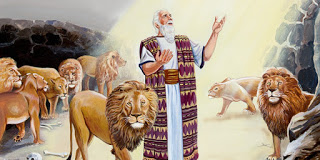Some Christians find the Gospel of the Beloved Disciple—commonly attributed to John—”difficult” to read because of its profound theological depth and contemplative tone, which distinguish it from the other three Gospels. Yet in its closing verse, it offers a statement that is universally accessible and deeply moving:
But there are also many other things that Jesus did; and if every one of them was recorded, I do not think the world itself could contain the books that would be written (John 21:25)
This powerful declaration reminds us that the Gospels present only a portion of what Jesus said and did. The apostles, having spent years in the intimate presence of the Master, were recipients of countless teachings that were never written down. Yet these unwritten words and moments were by no means insignificant. One can imagine the many tender and instructive encounters they shared—gathered around a fire by the Sea of Tiberias, enjoying freshly caught fish and good wine as Jesus unfolded parables, answered questions, and patiently reshaped their minds and hearts.
To form His followers for their mission, Jesus had to teach them how to think, how to live, and how to love—again and again, in every conceivable circumstance. Before His ascension, He entrusted them with a commission that extended to all nations: “Teach them to observe all that I have commanded you.” (Matthew 28:20) The apostles fulfilled this charge faithfully throughout their lives, and before their earthly journey ended, they ensured that Jesus’ teachings would endure. They passed them on—faithfully and fully—to their successors, who passed them to theirs, in an unbroken line that reaches today’s bishops. This living transmission, animated and safeguarded by the Holy Spirit, is what the Church calls Sacred Tradition.
Alongside Sacred Scripture, this Sacred Tradition forms the dual source of Divine Revelation—one oral, one written. Both are sacred, and both are necessary. Scripture and Tradition together preserve the fullness of God’s self-revelation. For example, the written Word does not explicitly tell us what happened to the Virgin Mary at the end of her earthly life. Yet from the earliest centuries, the Church—through Tradition—has consistently proclaimed her Assumption into heavenly glory. Cities founded many centuries ago, such as those named Asunción[1], bear witness to this cherished belief. It was not until November 1, 1950, that this belief was formally defined as dogma by Pope Pius xii. Sadly, when many Protestant communities chose to reject Tradition, they unwittingly severed themselves from this immense wellspring of spiritual knowledge and continuity.
Earlier in this chapter, it was noted that the Bible contains two of the four primary ways in which God communicates with us: the Evangelical Revelation (through the words of the prophets), and the Revelation through the life, ministry, and teachings of Jesus Christ. In the first case, prophets spoke not by their own will, but as instruments of God, using their own voices, cultures, and styles to transmit the divine message.
According to Merriam-Webster, prophecy is defined as “the inspired declaration of divine will and purpose, a prediction of something to come.” By contrast, a prediction is simply “a declaration that something will happen in the future.” The difference lies in the source: prophecy presumes divine origin, while prediction may stem from observation, intuition, or guesswork. In the same way, the term prophet is defined as “a person who possesses the gift of prophecy,” whereas a fortuneteller is “someone with the supposed ability to foretell future events, especially specific personal outcomes.” Again, the essential distinction is one of divine authority versus human speculation.
Throughout history, both prophets and fortune tellers have made claims about the future—some eerily accurate, others wildly off the mark. Their reputations rise or fall depending on whether their statements are fulfilled. The problem, however, is that many of these so-called prophecies are written in language so vague, cryptic, or ambiguous that any event could be interpreted as a fulfillment. This ambiguity allows for retrospective interpretation, giving the illusion of foresight where none existed.
Beginning in 2012, so-called “Mayan prophecies” began circulating widely on social media and soon spread through mass media outlets. One prophecy in particular captured public imagination—it predicted the end of the world on the winter solstice of that year. The buzz reached such heights that Hollywood produced a blockbuster film titled 2012, directed by Roland Emmerich, which dramatized these apocalyptic predictions. The film was seen by over 140 million viewers in North America alone and offered a cinematic interpretation of what the supposed prophecy foretold.
The source of this doomsday scenario was Chilam Balam of Chumayel, a collection of 16th- and 17th-century writings composed in the Yucatán Peninsula in the Mayan language. These books contain accounts of historical and prophetic events relating to Mayan civilization. The name “Chumayel[2]” refers to the town where the manuscripts originated. In the 1933 English translation by Ralph L. Roys, one prophecy—cited as the inspiration for the 2012 theory—reads:
On the thirteenth Ahau at the end of the last katun, the Itza will be rolled and the Tanka will roll, there will be a time in which they will be submerged in darkness and then the men of the sun will come bringing the future sign; the land will wake up in the north, and in the west, the itza will wake up.
How this poetic and ambiguous passage came to be interpreted as predicting the end of humanity on a specific date is difficult to comprehend.
The same tendency to retroactively impose meaning onto cryptic texts is seen in the case of Michel de Nostredame, better known as Nostradamus. A 16th-century French physician and astrologer, he published Les Prophéties in 1555—a collection of 942 poetic quatrains that purported to foretell future events. His method of divination involved a reflective ritual using a brass tripod and a bowl of water, through which prophetic visions would come to him in the form of flames or images.
Despite their opaque content, his writings found a receptive audience, including royalty. Catherine de’ Medici, Queen of France, was so impressed by his prediction of King Henry ii’s death in a jousting tournament that she summoned Nostradamus to court, honored him lavishly, and housed him in her palace.
Nostradamus became a celebrity, and people from across France sought his insight. To keep up with demand, he began composing what he called Centuries—prophetic verses grouped in sets of one hundred. Anticipating scrutiny from the Inquisition, he deliberately obscured his messages by using riddles and mixing several languages, including Latin, Greek, Provençal, Italian, Hebrew, and Arabic.
Supporters argue that Nostradamus’s prophecies have proven accurate—although their interpretations are invariably offered after the events in question. Take, for instance, the aftermath of Princess Diana’s death in 1997. Following the tragedy, Nostradamus’s followers pointed to Quatrain xxviii:
The penultimate son of the man with the Prophet’s name, will bring Diana to her day of rest; He will wander far because of a frantic head, delivering a great people from subjection.
Similarly, after the September 11, 2001, terrorist attacks, another verse was widely circulated online:
Two steel birds will fall from the sky on the Metropolis. The sky will burn at forty-five degrees latitude. Fire approaches the great new city. Immediately a huge, scattered flame leaps up. Within months, rivers will flow with blood. The undead will roam the earth for little time.
And concerning the atomic bombings of Hiroshima and Nagasaki in August 1945, interpreters cited:
Near the gates and within two cities there will be scourges the like of which was never seen: famine within plague, people put out by steel, crying to the great immortal God for relief.
But how do these verses, steeped in symbolic language and open to multiple interpretations, truly constitute prophecies? Most claims of fulfillment arise after the fact, often forcing events to fit the text through selective interpretation and creative reconstruction.
Now contrast this with a biblical prophecy, one spoken by Jesus Himself, recorded plainly and directly:
As Jesus left the temple and was walking away, his disciples came up to him to call his attention to the buildings of the temple. Then He said to them, “Do you see all these? Amen, I say to you, not one stone here will be left upon another; every one will be thrown down.” (Matthew 24:1-2)
This prophecy was fulfilled with chilling accuracy in the year ad 70, during the First Jewish–Roman War. The Roman army, led by Titus[3], the future emperor, and supported by Tiberius Julius Alexander, lay siege to Jerusalem, breaching its walls and demolishing its most sacred structures.
Flavius Josephus, a Jewish historian who was both a witness to and participant in the events, documented the horrifying aftermath. He wrote:
Now, as soon as the army had no more people to slay or to plunder, because there remained none to be the objects of their fury (for they would not have spared any, had there remained any other such work to be done) Caesar gave orders that they should now demolish the entire city and temple, but should leave as many of the towers standing as were of the greatest eminency; that is, Phasaelus, and Hippicus, and Mariamne; and so much of the wall as enclosed the city on the west side. This wall was spared, in order to afford a camp for such as were to lie in garrison, as were the towers also spared, in order to demonstrate to posterity what kind of city it was, and how well fortified, which the Roman valor had subdued; but for all the rest of the wall, it was so thoroughly laid even with the ground by those that dug it up to the foundation, that there was left nothing to make those that came thither believe it had ever been inhabited. This was the end which Jerusalem came to by the madness of those that were for innovations, a city otherwise of great magnificence, and of mighty fame among all humanity.
Ain-Karim, a tiny town situated seven kilometers west of Jerusalem in the Judean region, was the site of a prophecy at the dawn of the Christian era. Mary, who was pregnant and eagerly anticipating the birth of Jesus, visited Elizabeth, who lived there with her spouse Zechariah. The Virgin Mary sang the Magnificat, a hymn of praise to God, following the initial greeting. She prophesied that “All generations will call me blessed.” (Luke 1:48).
Imagine this moment: a girl perhaps fifteen years old, poor, unknown, unmarried, and from a tiny village, proclaims with absolute confidence that every generation of humanity will call her blessed. And now, over two thousand years later, Mary’s name is indeed honored across cultures, languages, and continents. Her image graces churches, her name is echoed in liturgy, and her role in salvation history is universally recognized among Christians. Against all odds, this prophecy, too, has come true.
Despite being composed over 1,700 years, by more than forty different authors, from diverse walks of life, in varied locations, and across multiple eras, the books of the Bible stand in astonishing harmony. They speak with a unified voice about God’s character, human nature, the path to salvation, and the promise of eternal life. The consistency of its message across such a vast span of time and geography defies human explanation.
Over the past century, public health efforts have shifted their focus—from combating problems related to malnutrition to addressing the growing crisis of obesity. The rise of industrialization has impacted every aspect of human productivity, including agriculture. In response to escalating demand, the food industry adopted increasingly efficient methods of mass production.
Take the Gallus Bankiva, a breed of chicken domesticated around nine thousand years ago, originally bred to produce just one egg per month. Today, commercial poultry farmers raise New Hampshire and Leghorn varieties, which can lay up to three hundred eggs per year. This drive toward large-scale, cost-effective output has flooded supermarket shelves with processed, calorie-dense foods. Unsurprisingly, just a few generations later, populations began to experience noticeable weight gain.
In response, diets emerged—quickly evolve into a booming industry. The market is now saturated with weight-loss solutions, each claiming superior effectiveness. Some extreme plans promise 10% weight loss in just two weeks, while others make similar claims without requiring any exercise. Certain diets tout the benefits of increased fat intake, while others demand an almost total elimination of fat. Some discourage vegetables in the early stages; others recommend incorporating them immediately. Dairy is eliminated by some, while others allow it. Fruit is forbidden by a few diets—at least temporarily—and alcohol is banned outright in some regimens but permitted in moderation by others. And yet, many of these trendy practices come with serious health warnings.
A century ago, the public had no access to literature on dieting. Today, bookstores have entire sections dedicated to weight loss and nutrition, filled with works written by medical professionals—physicians, dietitians, endocrinologists, and scientists. And yet, with so many books to choose from, it is impossible to find two that do not directly contradict each other.
Now, I invite the reader to consider this challenge: Choose any library in the world and try to assemble seventy-three books written over a span of seventeen hundred years by at least fifty different authors, from different cultures and continents, which contain 2,500 prophecies—95% of which have already been fulfilled—and that consistently address three major themes, all without a single contradiction.
|
The Holy Bible is composed of seventy-three books, written over a span of one thousand seven hundred years by at least fifty different authors who lived on three different continents. Despite this extraordinary diversity in time, geography, and background, the Bible revolves around three unified themes: salvation, the Church, and the Kingdom of Heaven. It contains more than 2,500 prophecies, of which over 2,380 have already been fulfilled—and these fulfillments can be historically verified. Even more remarkably, there is no contradiction among these core themes. From the first verse of Genesis to the final word of Revelation, there is an unmistakable thread of coherence and consistency throughout. Such unity is humanly impossible across so many centuries and by authors. The only way this could occur is if the entire Bible has one ultimate Author: The Holy Spirit. God revealed His will through these chosen individuals, guiding them to record exactly what He intended for humanity to know. God’s unique method of communication with us unfolds through two channels: oral and written revelation. Through them, He invites us to understand His truth, to trust in His plan, and to enter into a relationship with Him—across generations, cultures, and ages. |
[1]Asunción is the capital city of Paraguay, founded on August 15, 1537.
Nueva Guatemala de la Asunción is the capital of the Republica the Guatemala, founded on January 23, 1776.
Nuestra Señora de la Asunción de Panamá was the original name of Ciudad de Panamá, the capital of Panamá, founded on August 15, 1519.
[2]Chumayel is a town in the state of Yucatán, Mexico, and serves as the administrative center of the municipality of the same name. It is located approximately 70 kilometers southeast of Mérida, the state capital, and about 20 kilometers north of the city of Tekax.
[3]Titus Flavius Sabinus Vespasianus, commonly known as Titus (December 30, 39 – September 13, 81), was Roman Emperor from ad 79 until his death in ad 81. He was the second emperor of the Flavian dynasty, which ruled the Roman Empire from 69 to 96. This lineage includes the reigns of his father, Vespasian (69–79), his own (79–81), and that of his brother, Domitian (81–96).







